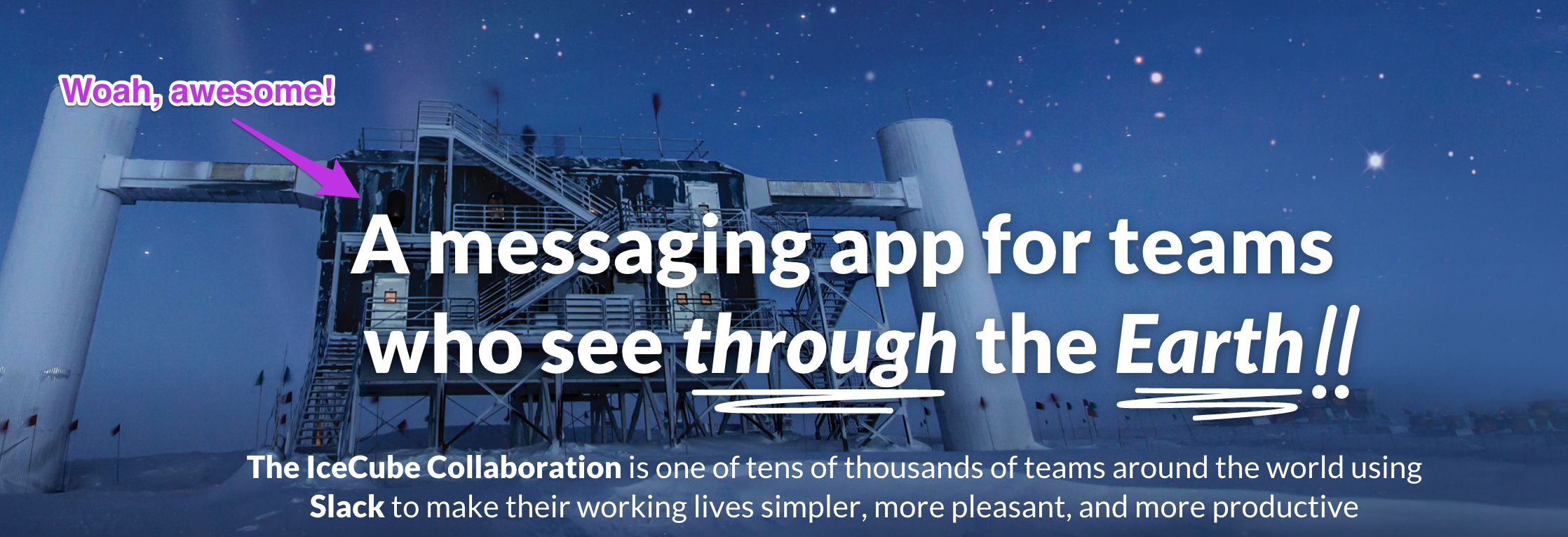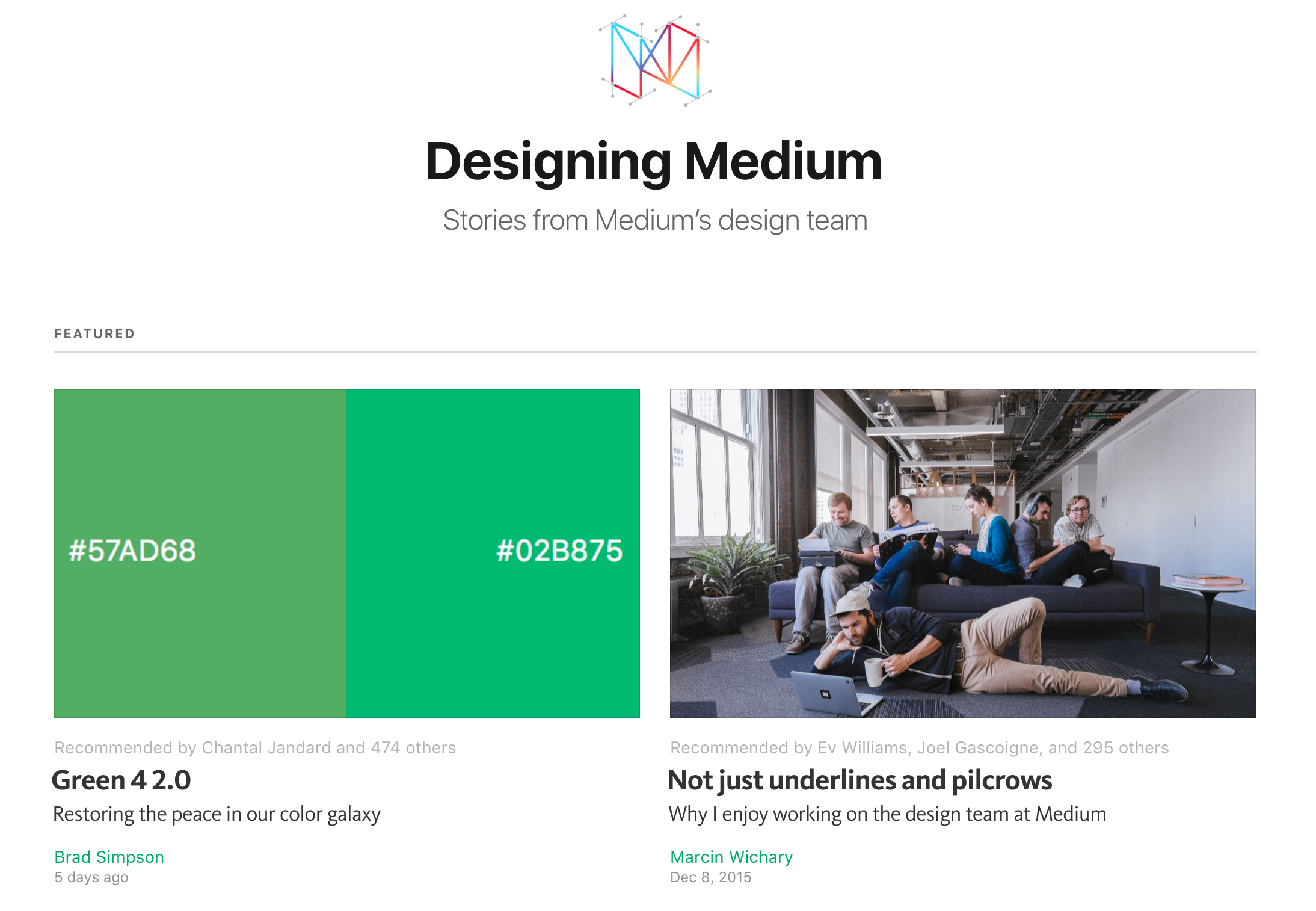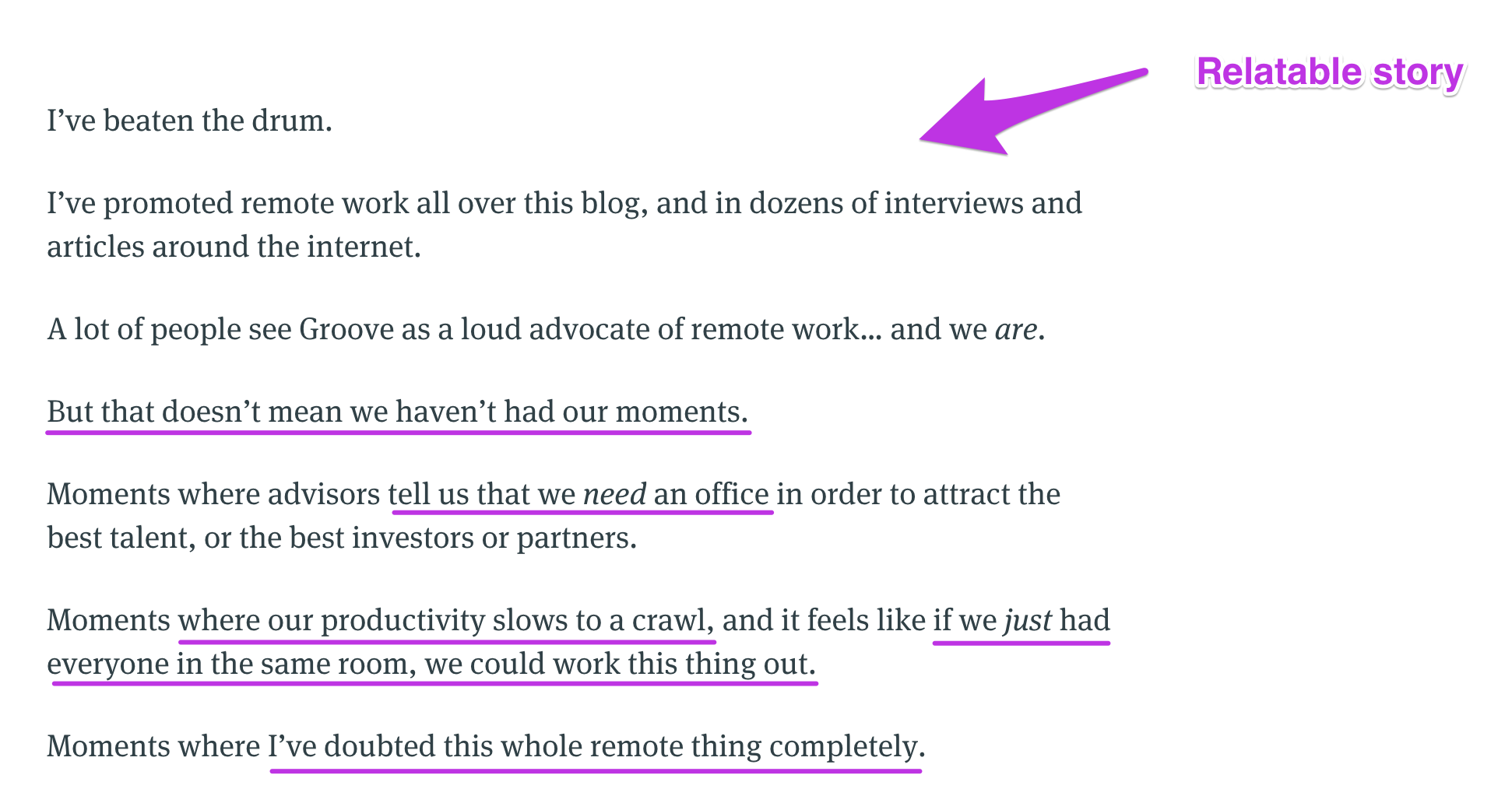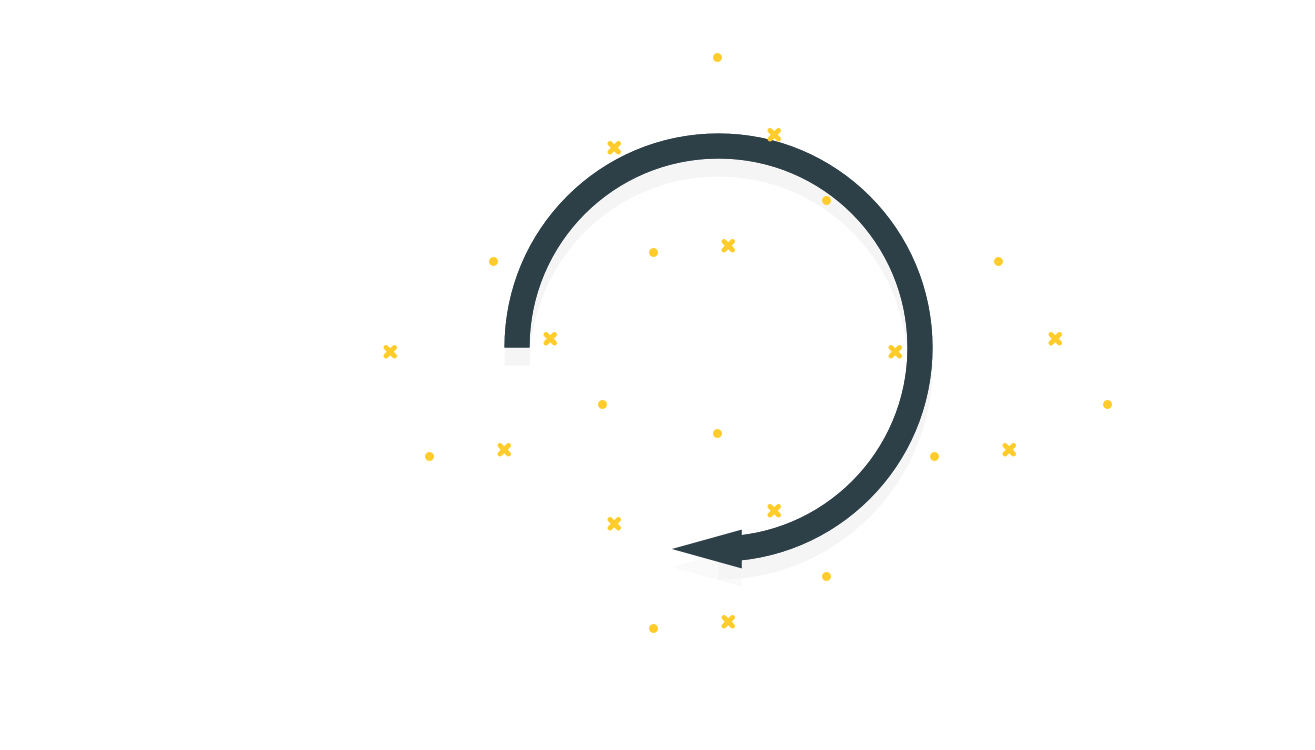
5 Wonderful Ways to Immediately Level Up Your Content Marketing Copy
February 3, 2016
Writing
Sadly, most content marketers don’t think they can make their readers really feel anything, so they don’t try.
The amount of unemotional, disconnected content I see all over the web every single day is unbelievable. I’m sure I’m guilty of creating mundane copy too—it’s hard not to sometimes.
Time to step away from the corporate textbook. Start writing content that people love reading by putting your personality on the page.
Stop Talking About Your Product
Let’s face it, visitors don’t really enjoy reading about how amazing your industry is or how it’s going to change in the future.
Your blog isn’t about trying to shove your product down a reader’s throat. If you’re just trying to sell on your blog, you’re doing it wrong.
Sure—add a call to action to the side, in the middle, or down below to entice readers to take a look at your homepage or sign up for your emails. Just don’t constantly talk about how amazing your software is. They don’t care yet.
People visit blogs to consume knowledge and read amazing stories, so that’s what you should give ‘em. Here’s how.
Break It Down
People hate reading long paragraphs. When I see a 6 sentence whopper I just up and leave. There’s no way I’m gonna be able to finish the paragraph.
Turns out some clever researchers have looked into why this happens—people actually tend to read in an F-shaped pattern.

Researchers at the Nielsen Norman Group conducted an eye-tracking study with 232 participants. When they mapped out the results, they found a pattern to the way people read content on a page.
The participants weren’t usually reaching the end of sentences. And the further down the page, the less of the sentence they read.
The participants were scanning the first part of the sentence and then jumping down to try and find more stimulating content.
But now take a look at the search engine results page on the right. The participants seemed to find it easier to digest the information, even towards the bottom.
Users won’t read your text thoroughly in a word-by-word manner.
Jakob Nielsen, NN Group
Seems like using shorter sentences helps readers consume the information. It’s the reason academic research papers are formatted the way they are. While they’re usually boring, they’re darn easy to read.
Takeaway: Break sentences into chunks. Don’t use long paragraphs—people won’t reach the end.
Corporate Copy Is Dry and Boring
Just because you’re a business, doesn’t mean you need to be formal.
You need to be different. Why? Well, people are becoming less susceptible to traditional advertising—particularly Millennials.
A great example of boring software products that are breaking the mold is Slack, which I’m sure you’ve all heard of.
Slack changed the game when they busted into the corporate chat software business. They succeeded by offering something different—something people actually wanted to use.
It took them a few years to get things just right, but because they were different their product captured the attention of ‘sneezers’. These are the people who’ll help promote your product.
‘Sneezers’ are at the core of any ideavirus. Sneezers are the ones who when they tell ten or twenty or 100 people about an idea—people believe them.
Seth Godin, Purple Cow
Slack’s mobile and desktop apps are both colorful and exciting. The copywriting on their website is light hearted without missing the point of telling the visitor what it actually does.

Slack isn’t the only one trading dull, boring copy for funnier, more engaging content though.
Medium—the social blogging platform—are doing pretty awesomely too.

They’re pretty open about their processes and the way they work. When you dig into their articles, they’re well written but not too serious. From a company all about words, it makes sense.
If you’ve got the Medium app, you may have noticed the copy in their iOS updates. They like to mix it up, from how to create a ‘bug soup’ to pasting in their Slack channel chat history. It’s 100x better than ‘Bug Fixes’.
Pretty nifty, eh?
It’s All in The Storytelling
Capturing the imagination of your readers is one of the most powerful things you can do as a content marketer. Storytelling and sharing personal experiences are amazing ways to draw in your readers.
Groove make simple help desk software. They use the power of storytelling on their startup journey blog (also named Journey to $500k a month).
Alex—the CEO who writes most often on the blog—usually leads the reader by sharing a personal story of his. Whether it’s about chatting to an influencer, realizing he’s done something awful, or coming up with an idea, his stories are always relatable.

As you can see here, Alex shares the benefits and drawbacks remote work has had on his company. Because many SaaS founders read the blog, it’s relatable and the readers can understand his situation.
Here’s some ways you can relate to the reader in your content:
- Give them a behind the scenes peak. People love to see what’s going on behind the company website. What’s going wrong, and what’s going right? What experiments have you conducted? What were the results? Be honest!
- Reveal something about yourself. Putting your past on a page is tough, but it’s a fantastic way to relate to your readers. If something happened in the past that’s affecting your decisions, be open about it. It makes readers feel privileged.
Don’t just take my word for it, though—filmmakers, journalists and brands use the power of storytelling to take the reader on a journey.
It’s the reason why we rush to get tickets for the latest Star Wars, and why we queue up to get our hands on the latest iPhone. Ooh, shiny. ✨
We all love stories. We’re born for them. Stories affirm who we are. We all want affirmations that our lives have meaning. And nothing does a greater affirmation than when we connect through stories
Andrew Stanton, Filmmaker
Check out this talk by Filmmaker Andrew Stanton. He’s the person behind some of the best stories in the business—Toy Story, Finding Nemo and WALL·E. It’s well worth a watch.
In the talk, Stanton explains that in his film John Carter, a scene is making a promise to carry on the story at a later date.
What this scene is doing, and it did in the book, is it’s fundamentally making a promise. It’s making a promise to you that this story will lead somewhere that’s worth your time. And that’s what all good stories should do at the beginning, is they should give you a promise
Although filmmaking seems completely different to content marketing, it’s the same principal. Start with something that’ll lead the reader down the page—make a promise to resolve it.
As Stanton put it “they’ll work for their meal, they just don’t want to know they’re doing it”.
Takeaway: Use the art of storytelling to add emotion to your content marketing. Create a journey that ends in resolution.
Use The Open Loop (Then Close It)
Open loop (or curiosity gap) is a similar tactic, used by copywriters to grab the reader and get them to click, open or share.
Joanna Weibe of CopyHackers uses this in her email and website copy to draw in the reader.
The idea with the open loop is to tell people just enough to pique their curiosity and leave them itching to close the loop (aka to find out what they’re missing).
Joanna Weibe, Email1K
This tactic has been used by Neil Patel to get a 102% open rate for his welcome email. Impressive, huh?
The premise is that you open up a loop by asking a question or not telling the whole story. Later on, you hint at it, and only at the end of the article do you actually close that loop.

This creates curiosity for the reader. They feel the need to close the loop and end the story, and doing so helps you get them to the end of the article or open your email.
Takeaway: Use the open loop like a fishing rod to hook the reader, then pull that line back and draw them in. At the end, let them go again by closing the loop. 🎣
Start Making Awesome Stories
It’s time to put your corporate dictionary in the bin and get out your storytelling hat. Copy shouldn’t be dull—it should be exciting, interesting and should take the reader on a journey.
Make it worth the reader’s time and they’ll repay you by being an engaged and loyal subscriber.